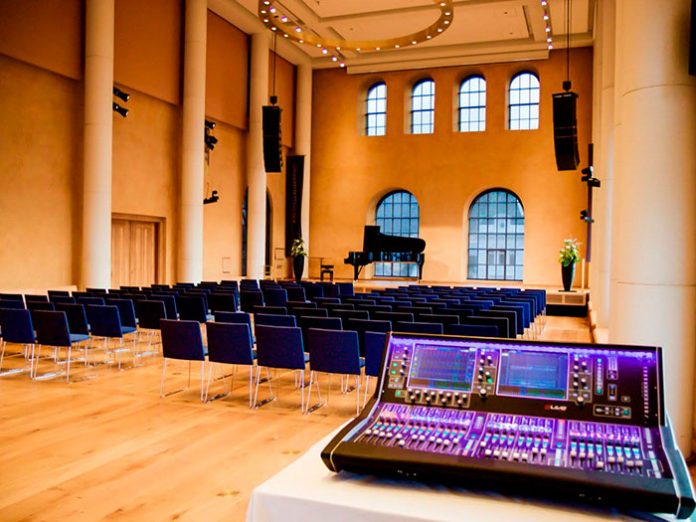Norway’s Bergen University recently opened a new performance hall, selecting Allen & Heath’s dLive digital mixing system and ME personal monitoring system to manage all of the audio requirements.
The University Aula was opened last year with the intention of providing a venue for live events for its academic, and particularly science, fields. Situated in the newly renovated south wing of the Natural History museum, the 300-capacity hall has also become a favourite with a diverse range of users from the Bergen Philharmonic and Grieg Academy to local rock bands, such as Hvitmalt Gjerde, and has become increasingly popular as a live performance venue.
The original technical specification was intended to cater predominantly for oral presentations, with no dedicated front of house mix position. However, the Aula’s popularity as a live performance venue saw the need for a powerful, flexible and compact digital mixing system that, in addition, could be run without a surface attached to deal with the wide variety of cultural events, debates and concerts that regularly take place.
“This was one of the most important factors in choosing dLive,” says technical coordinator, Arild Grindheim. “There is a completely self-sufficient stagebox with the capacity to process, mix and distribute simultaneously without a surface controller attached. This in itself is quite a challenging specification for a manufacturer but one A&H meets with dLive. The generous I/O, numerous expansion options, and built in features, such as the ME 40 channel personal monitoring solution, all contribute to making this a very powerful and flexible mixer.”
Siv Ing Benum of Oslo supplied the University with a dLive system, comprising an S5000 Surface with a DM64 MixRack equipped with an M-Dante-A card, an IP8 remote control unit, and a ME-U hub with several ME-1 units.
“Being a facility with many different users of varying technical abilities required a surface that is easy to navigate and straightforward for those with minimal skills, yet with all the essential tools instantly available for the most experienced engineers – a requisite that dLive fulfills completely. The fact that all of this can be achieved while still being able to visually monitor the status of gain level, gain reduction and gate activity on 64 channels on a single surface is quite unique. We have made an excellent choice with dLive,” concludes Grindheim.





